Floodplain Info
Learn More
 The Official Web Site of the State of South Carolina
The Official Web Site of the State of South Carolina
Town Hall will close at 1pm on 12/23/25 in celebration of the Christmas Holiday. We will reopen on 12/29/25 at 8am.
Sign up for Everbridge, the Town’s Emergency Notification System, to receive emergency texts and emails, and the Town's Monthly Newsletter to stay up to date on all of Town's meetings, projects and special events.

 Dear Island neighbors,
Dear Island neighbors,
Well, we survived the Great Blizzard of ’25! Hopefully you and your family made it through without incident, and the kids (and grownups) had some fun without making it into any of the more embarrassing “Hey Y’all, Watch This!” videos of us southerners showing our creativity with snow and ice.
We’ve got a variety of items here, so let’s roll, first with a very serious one.
RECENT HARRASSMENT INCIDENT
You may likely have seen news stories about the disturbing encounter that occurred on the Island last week where someone (not a resident) confronted some landscaping workers and (according to the viral video of the incident) appeared to impede their movement and to harass them, verbally and otherwise, about their status in the US.
While this is not the sort of thing that any community would want to be connected to, the news stories all carried the Sullivan’s Island byline. Our Police Department handled the incident as expeditiously and expertly as anyone could possibly hope for. Under the leadership of Chief Glenn Meadows and Deputy Chief Monty Anders, our great officers, along with law enforcement professionals from other agencies, were able to identify, charge and arrest the suspect in less than two days after it was reported. The case is therefore in the hands of the justice system, where it belongs.
However, in any event, the coverage of this disturbing incident did associate it with the Island. Please feel confident that you can assure any family, friends and associates who contact you about it, that our law enforcement professionals took care of it promptly and professionally, and that the behavior in the video is not anything we tolerate, much less support.
THANK YOU, LARRY DODDS!
At our December Council meeting, we had the bittersweet task of recognizing the retirement of our longtime (44 years!) Town Attorney, Larry Dodds. Please watch the beginning of this meeting where we read the Resolution honoring and thanking Larry, and he made some very warm and personal comments about his dedication to the Town. You can stream the meeting at https://bit.ly/SIDecTC; adoption and reading of the resolution, and Larry’s gracious comments, begin just a little after the 1:00 (minute) mark. Please take a few minutes to watch this to learn what great dedication and service Larry has shown to his home town.
WELCOME, ATTORNEY JOHN LINTON!
While we cannot replace Larry’s experience and historical knowledge of the Island, we are extremely fortunate that Attorney John Linton will assume the role of Town Attorney. John has represented the Town in a number of significant matters over the last several years, and as an East Cooper resident is a part of our community, with family on the Island. John has a very impressive reputation in the local legal community, so we are very fortunate that he is willing to work more closely with us going forward!
DRAFT OF HISTORIC DESIGN GUIDELINES
Some time ago we obtained grant support from the National Park Service’s Historic Preservation Fund, administered by the South Carolina Department of Archives and History, to draft and compile guidelines for repair, renovation and modification of the many protected historic structures on the Island. This is of course only a first step in a process of codifying such guidelines, but it is an important one.
A crucial component of this early step is disseminating our consultants’ recommendations and eliciting input about them from residents. A great opportunity for providing your input is at an Open House before the Town Council meeting on Tuesday, February 18. It will begin at 5:00 at Town Hall and allow you to review the draft guidelines and interact with the consultants and staff.
The DRAFT guidelines are available to review here.
COYOTE ACTIVITY
Police Chief Meadows reminds us that coyote breeding season is February and March. You may see increased coyote activity. For more information, see: https://bit.ly/SCDNRCoyote
We do want to track coyote sightings and interactions. Please report non-threatening observations and interactions to the Charleston County Consolidated Dispatch Center at our police non-emergency number, 843-743-7200...think of the school plus 200 (SIES 200).
Of course, if you observe active aggression by a coyote, call 911.
See you around the Island!
Pat O’Neil
Mayor
843 670 9266
oneilp@sullivansisland.sc.gov

Help Keep Your Pipes Clean and Your Meters Clear
Pipe blockages can be costly and often can be avoided. Pouring oil down the kitchen sink with a hot water rinse may seem harmless but somewhere down the line that oil will cool and congeal coating the pipe and causing blockages and, over time, a backup. To avoid the hassle, and cost of a plumbing backup, place cooled cooking oil, grease or fat of any kind in the trash instead, preferably in a lidded container.
Limiting what items are flushed down the toilet is also imperative in avoiding a plumbing back up. Toilet paper is designed to break down in the sanitary sewer systems but facial tissues, single use cleaning wipes and paper towels are designed to absorb liquids which can lead to a blockage and should be placed in a trash can instead. Flushable wet wipes may be marketed as safe for sewer systems, but are not designed to breakdown in pipes and should also be disposed of in the trash can.
Residential water usage data is maintained by a touch-read, computerized meter reading system that allows meters to be read once per month and easily downloaded for review and billing. Water meters are typically located on the property line near the SCDOT right of way. Avoid planting within a 4-foot vicinity of the water meter and keep the meters clear of yard debris. This gives easy access to Water and Sewer Department staff and allows for easier meter reading. If you would like to know the location of your water meter or customer shut off valve, call South Carolina 811 and request a locate to familiarize yourself with your water meter.
For any questions or additional information please contact Mary Poole at mpoole@sullivansisland.sc.gov.

Maritime Marginalia
by Town Naturalist Rebecca Fanning on odds and ends of interest regarding the lively world out of doors on the Island.
In recent issues of Maritime Marginalia, I discussed the two shrubs that may be pruned to a height of at least 5 feet – Eastern Baccharis and Wax Myrtle, but this month I decided to share the fascinating story of the one invasive addressed by the Town’s RC-1 Trimming and Pruning Ordinance (§21-71), the Popcorn Tree (Triadica sebifera).
With just a couple of weeks left to go in the Town’s maritime forest trimming and pruning season, we have some tremendous results to share. Thousands of invasive popcorn trees have been carefully identified, chopped down, and dragged off Island with many thanks to the handful of residents who utilized the popcorn permit this year. Bravo! Encore!
I understand this marks a big change for the Island’s trimming and pruning season, as this is the first year the Town Naturalist (that’s me! – I’m new here) has steered contractors towards the popcorn tree removal aspect of the permitted work. You might notice the work wrapping up along our beach access paths and forest edges, and it may look a lot like illegal forest clearing activity with huge trees coming down. Rest assured, if it’s part of the permitted popcorn tree removal process, then the contractors performing the work should have a permit advertised on site. However, if you have any concerns, don’t hesitate to reach out to Town Hall at 883-3198 or the Police Department at 883-9636, and we’ll investigate further.
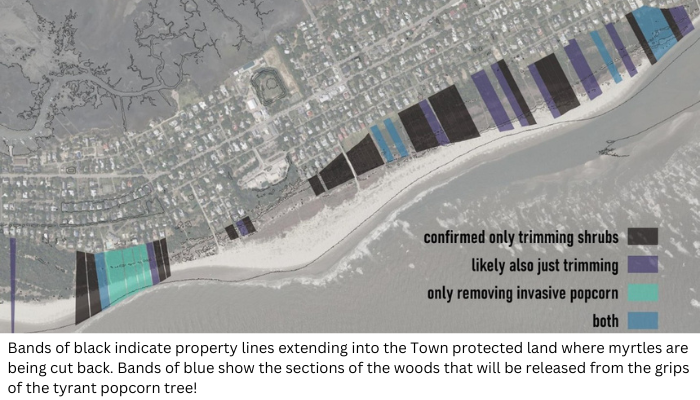
Who You Callin’ Invasive?
Before we dive into the fascinating particulars of the popcorn trees, let’s get our story straight about the words native v. non-native v. invasive, because it makes a big difference. A good definition for a native plant or animal is one that’s been local to the area for at least a thousand years. And depending on how hyper-local you want to take your definition of native, we can come up with a list of native species specific to the US, the East Coast, the Southeast, South Carolina, the Lowcountry, barrier islands, or the Sullivan’s interdune pond… each narrowing in scope and bringing a more niche community into definition.
To complicate things, something that’s non-native to South Carolina, like the armadillo or roseate spoonbill, may become an increasingly common sight through a process misnamed ‘natural’ range expansion. As habitat is lost to development in Florida and warmer waters work their way up the coast, we may find ourselves increasingly home-like to a number of species that historically have not ventured to our shores. Perhaps a new word is in order for this thing in between native and non-native. Call them transplants?
As long as a transplant isn’t entirely out of their element and some of the scenery remains close enough, we don’t expect too much of an ecological imbalance for the new home away from home. A spoonbill, for example, probably pals around with the same shorebirds in Florida as she does here and knows to leave them the high banks they prefer. A similar concept applies to our ‘transplant’ plants, if you’ll forgive the expression. We can hope that the extant pollinators, soil microbes, caterpillars, birds, and other creatures will be able to embrace any plant that makes a new home for itself on our shores.
All invasives are non-native. Not all non-natives are invasive…. Not invasive yet, anyway. A plant becomes invasive when it substantially disrupts the local ecology and takes over areas that otherwise would be more biologically diverse and serve more members of the community. Popcorn tree, as we’ll soon learn, was introduced to our region in the 1700’s but didn’t become an invasive plant until something like the year Hugo hit, which is to say, it became a monster in living memory.
As someone who has spent a lot of time out in the woods across the state my whole life, I can say that for some reason Sullivan’s Island is a testing ground for turning non-natives into invasives. Check out this list of common non-native plants I’ve found growing wild in our woods. It’s harrowing!
An Illustrious Introduction
In its native habitat, the seeds of popcorn tree were pressed for oil and wax to make candles, soaps, and oil-based paints, from which the plant takes its second common name – the Tallow Tree. Rumor has it that we have Benjamin Franklin to blame for introducing the invasive popcorn tree in the first place, but more than likely there were a number of botanists and entrepreneurs independently importing seeds of this plant from its homeland far away via the British East India Company, which traded in such botanical speculative disasters.
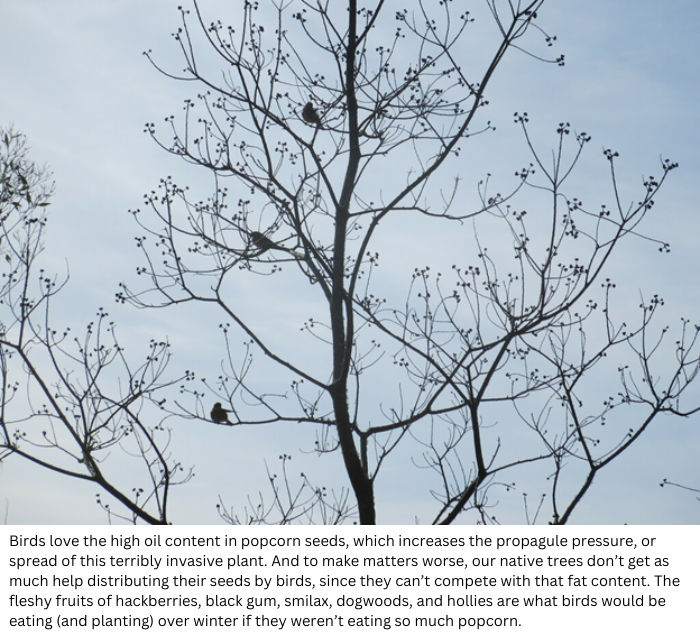
In the Southeastern United States, I don’t guess anyone was feeling quite as industrious as Franklin had hoped. In lieu of farming it, the popcorn tree became one of the southeast’s many horticultural darlings, alongside camellias (an invasive version of which was originally imported for tea production) and camphor trees (also invasive). Boasting beautiful fall foliage, festive white seed pods, and offering all the benefits of deciduousness to the old home (summer shade and winter warm), the popcorn tree served as a well-behaved, good-looking garden plant for many generations. Better than a mere garden statue, the popcorn tree became beloved by birds for those high-fat seeds and offered copious quantities of nectar during the early spring months when nectar can be scarce for emerging bees and wasps.
In this period of its non-native but not yet invasive existence, it was contributing, not detracting from the surrounding environment. But all that would change.
The Insidious Invasion
Though the popcorn tree’s horticultural debut in South Carolina dates back to the 1770s, it wasn’t until after Hurricane Hugo in 1989 that its invasive nature became abundantly clear. There are a number of scientific investigations as to what changed over the course of those two centuries to turn this non-native plant into an invasive pest, but one of the key ingredients is time. It takes time for a plant to adapt and discover and respond to its new territory. Over the course of the many generations of popcorn trees born here in the lowcountry, the trees figured out how to germinate in full shade. Somehow they talked soil mycorrhizal networks into giving them deferential treatment, perhaps offering up more plant sugars than other trees could afford to give. And then they lay in waiting for their time to shine.
When Hugo barreled through our region and its forested areas in 1989, it opened up canopy in its wake, bringing light down to the forest floor and waking up the entire seed bank, triggering natural reforestation. The popcorn trees, however, with their ability to sprout in shade and survive floodwaters had a bit of a head start to begin with, not to mention an incredibly unfair advantage misnamed as the ‘Enemy’ Release Hypothesis.
The Double Edged Sword
Unlike other plants that have been in the lowcountry for thousands of years, popcorn trees are basically unrecognizable to our local leaf-eating caterpillars. The exact concoction of secondary metabolites contained in any given leaf of a plant has triggered a corollary arms race in the equipment of insects’ bodies to process those chemicals, many of them potent toxins! Amazingly, when a plant senses that it is being chewed upon, it can unleash its inner bitterness, jacking up the concentration of these nasty-tasting toxins throughout its leaf network. And it’s not in vain. But that effort comes at a price. Instead of converting the sun’s energy into new growth, nectar to attract pollinators, and then the fleshy fruit of seeds, it has to spend resources and effort on producing defensive chemicals and recouping the loss of its photosynthetic capacity on chewed leaves.
Popcorn trees don’t have to worry about that. There’s only two caterpillars that have the tools they need to defend themselves against the specific chemicals in popcorn leaves, and thankfully one’s been spotted on the island! But that’s a paltry one ‘enemy’ to fend off with chemical warfare, whereas native plants can have hundreds of different species to worry about. The theory behind the ‘Enemy’ (i.e. caterpillar) Release Hypothesis is that this competitive advantage works twofold: the invasive plant reproduces more successfully AND grows faster.
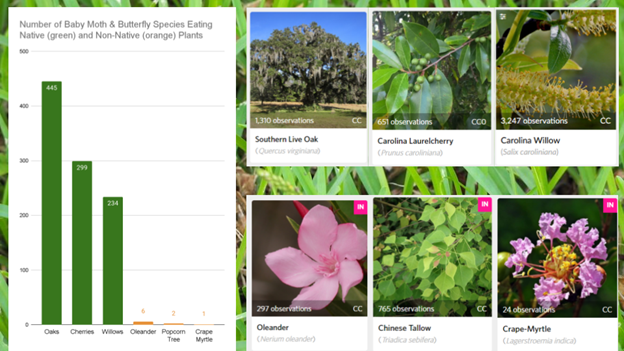
While you may not harbor a soft spot for caterpillars, our resident songbirds do. Whereas adult songbirds may visit birdfeeders or snack on popcorn seeds over winter, come spring time there’s one thing on their mind: finding baby food to rear young. And baby songbirds almost exclusively eat one thing: caterpillars! Thanks to the tireless efforts of poor graduate student research, we have a pretty good estimate of how many caterpillars it takes to rear one nest of chickadees. Wait for it…. That’s six to nine thousand caterpillars per nest! And chickadees in South Carolina typically rear two nests in a year. Without native plants on the landscape, in our yards and wild places, it’s a safe bet that bird populations will continue to plummet. So if you love seeing painted buntings in the woods as much as I do, consider the popcorn tree and think twice about the benefits it provides for wildlife.
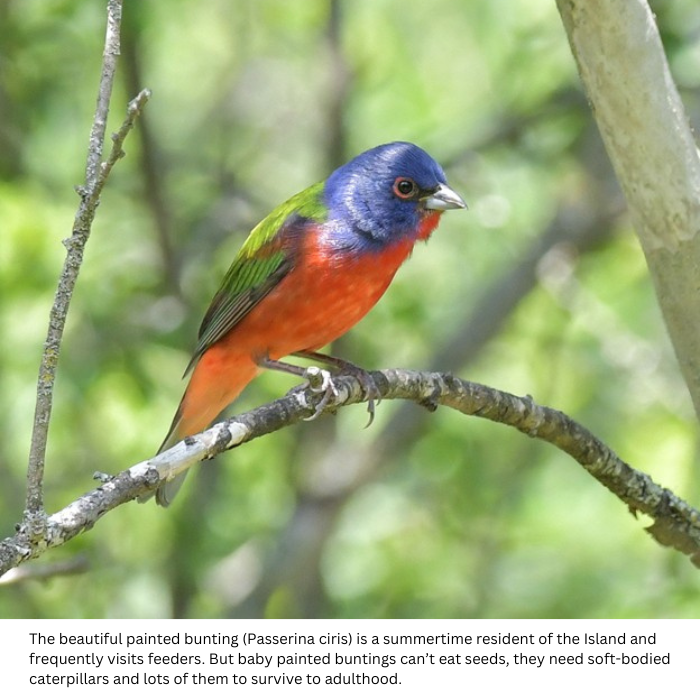
See for Yourself!
As we wrap up this season's work removing popcorn trees, it’s important to recognize the broader impact of these efforts. While the fight against invasive species like the popcorn tree is ongoing, it’s encouraging to see our community come together to restore the health and diversity of our local maritime forest. This will be an ongoing challenge and opportunity to distinguish the Island as a thriving habitat for both native flora and fauna.
Taking a walk down the nature trail, you’ll pass the Sand Dunes Club and adjacent property owners who have all banded together to remove popcorn from their neck of the woods. That’s public Town-owned land in the woods along the path, and I encourage you to step off trail and have a look at the results. Thousands of stumps are visible in the woods there, and if you look really closely, you’ll notice an almost complete lack of tree rings in those stumps, because popcorn trees grow so dang fast!
No doubt those stumps will sprout hydra heads of new growth this spring. No herbicides were used this year out of a concern for all those amphibians in adjacent wetlands. It will, however, take many years for those young sprouts to bear seeds, just like how so much of the native wax myrtle doesn’t produce seed due to annual pruning, as I described before.
In the meantime, I hope that our community will keep at them, permitting this important work every year, finally giving the popcorn tree a worthy enemy to contend with!
Aside
I had an excellent walk with members of the Island Club recently and took them to see the popcorn stumps along the nature trail. You should come next time!
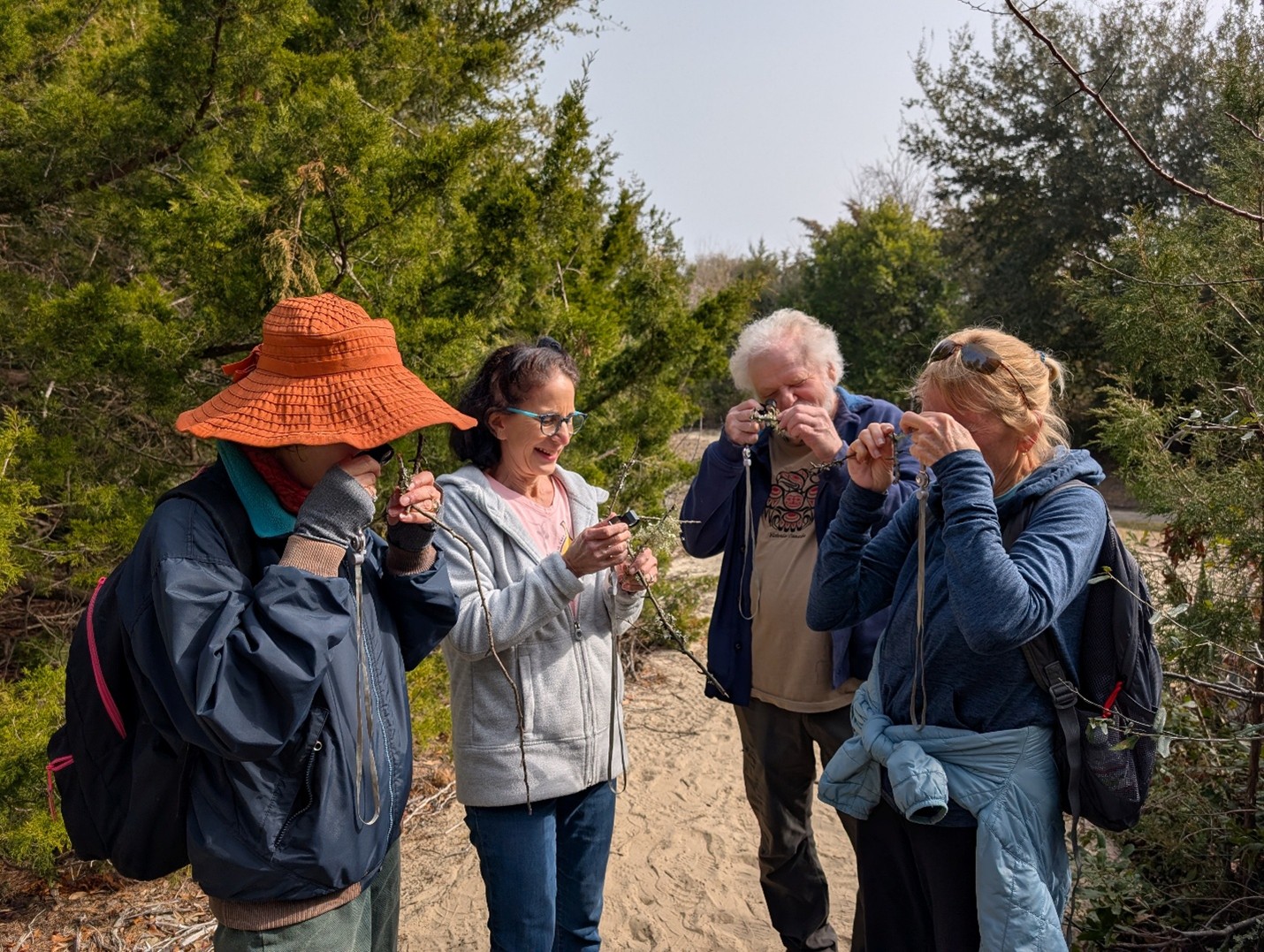
Ask a naturalist: Use the subject heading Marginalia and email rfanning@sullivansisland.sc.gov with all your questions such as, What’s that blooming? Who’s that bird passing through? Or When and where we should meet for a walk! for consideration next time in Maritime Marginalia.

The Town of Sullivan's Island uses several different methods to contact residents in case of emergencies, to notify of town news and meetings and for general announcements.
TOSI Talks is a text based system that is used to notify people of town meetings and news like office closures and garbage and recycling schedule information. To sign up for TOSI talk alerts, text "Hello" to (855)675-8674.
Everbridge is the Town’s Emergency Notification System that sends email alerts from the Town Administrator, Fire or Police Chief or Water and Sewer Department that can include information concerning road closures, severe weather, emergency water main break, public works projects and other pertinent information. You can sign up for Everbridge here.
Both systems require the client to set up an account and both have different options for the types of notifications you will receive. Please sign up for all possible alerts to ensure you receive all of the news and messages.
The arrival of the warm weather brings thoughts of balmy beach days but also spring cleaning. Knowing how and when to dispose of the items you no longer need can help in planning and preparation. Bulk and household debris, also known as white goods, are collected every Wednesday. Bulk items are defined as household furniture, appliances, lawn furniture and the like. Below are some basic guidelines for preparing your goods for pick up.
Large appliances like refrigerators and freezers are accepted, however, the freon must be removed and the doors must be removed to prevent entrapment.
Electronic Waste, Concrete Blocks and Bricks and Hazardous Materials, including oil and paint, must be disposed of by the home owner. Such items may be dropped off at certain Charleston County Convenience Centers. Click here for more information.
Furniture like sofas and tables should be left fully assembled for pick up. Please do not break down items as they may be mistaken for construction debris and will not be collected.
Mattresses are bulky and springy so they don’t compact well and take up lots of valuable space in landfills. Mattresses can be recycled in Charleston County through a company called bedshred.com. When mattresses are recycled they are taken apart and the metal, foam and wood are recycled separately to make new items like carpet pads and bike spokes. Mattress recycling does cost a small fee. Click here to schedule pick up. Otherwise, mattresses can be put out for curbside pick up.
Please have the items out for pick up the night before or the morning of pick up by 7:00 am. If you have large items for collection we encourage you to call Town Hall at 843-883-3198 in advance to alert the driver and ensure pickup. Construction materials (large or small) will not be collected under any circumstances. Republic Services and The Town of Sullivan’s Island will not haul it away.

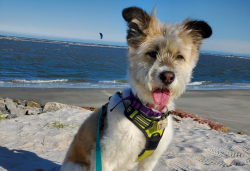
2025 Dog Licenses Available
2056 Middle St
8:00 am - 5:00 pm
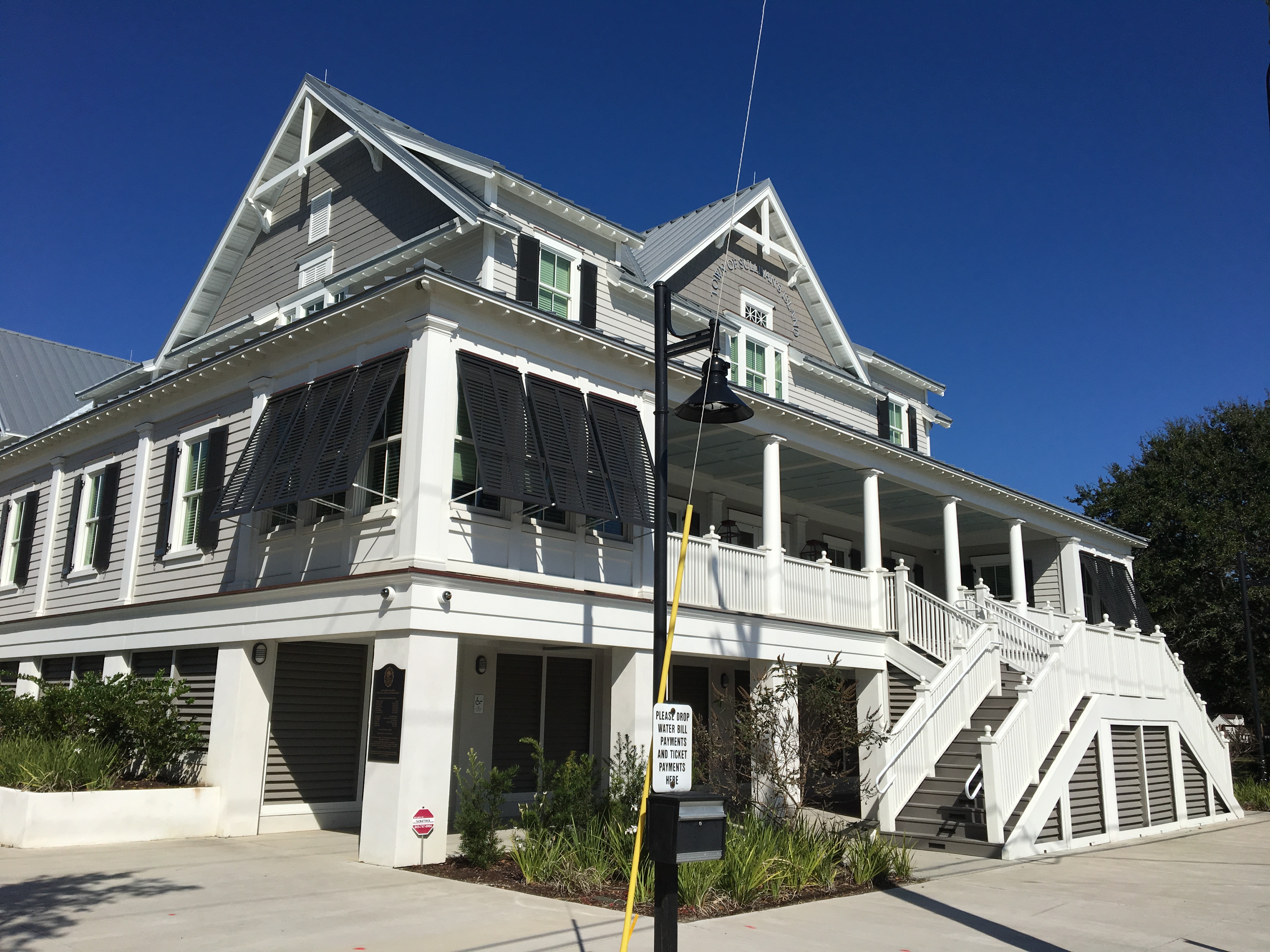
Sullivan's Island Business License Renewal
February 1, 2025
2056 Middle St
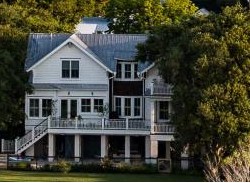
Historic Design Guidelines
Thomason and Associates
Open House
February 18, 2025 CANCELED
Tentatively Rescheduled
April 15, 2025
5-6 pm
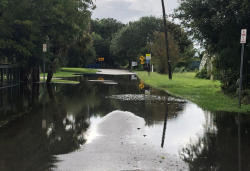
Final Presentation of the Stormwater Master Plan
Seamon, Whiteside and Associates
March 18, 2025
6:00 pm
2056 Middle St
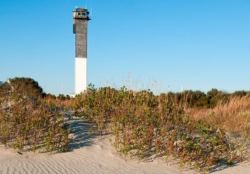
Rotary Club of Mt Pleasant
Beach Sweep Trash Pick Up
March 1, 2025
2014 Mike Perkis Pl
8:00-9:30 am


Join Council in congratulating those employees who celebrated employment milestones with the Town during the month of February! Thank you for all of your hard work keeping our Sullivan's Island awesome!
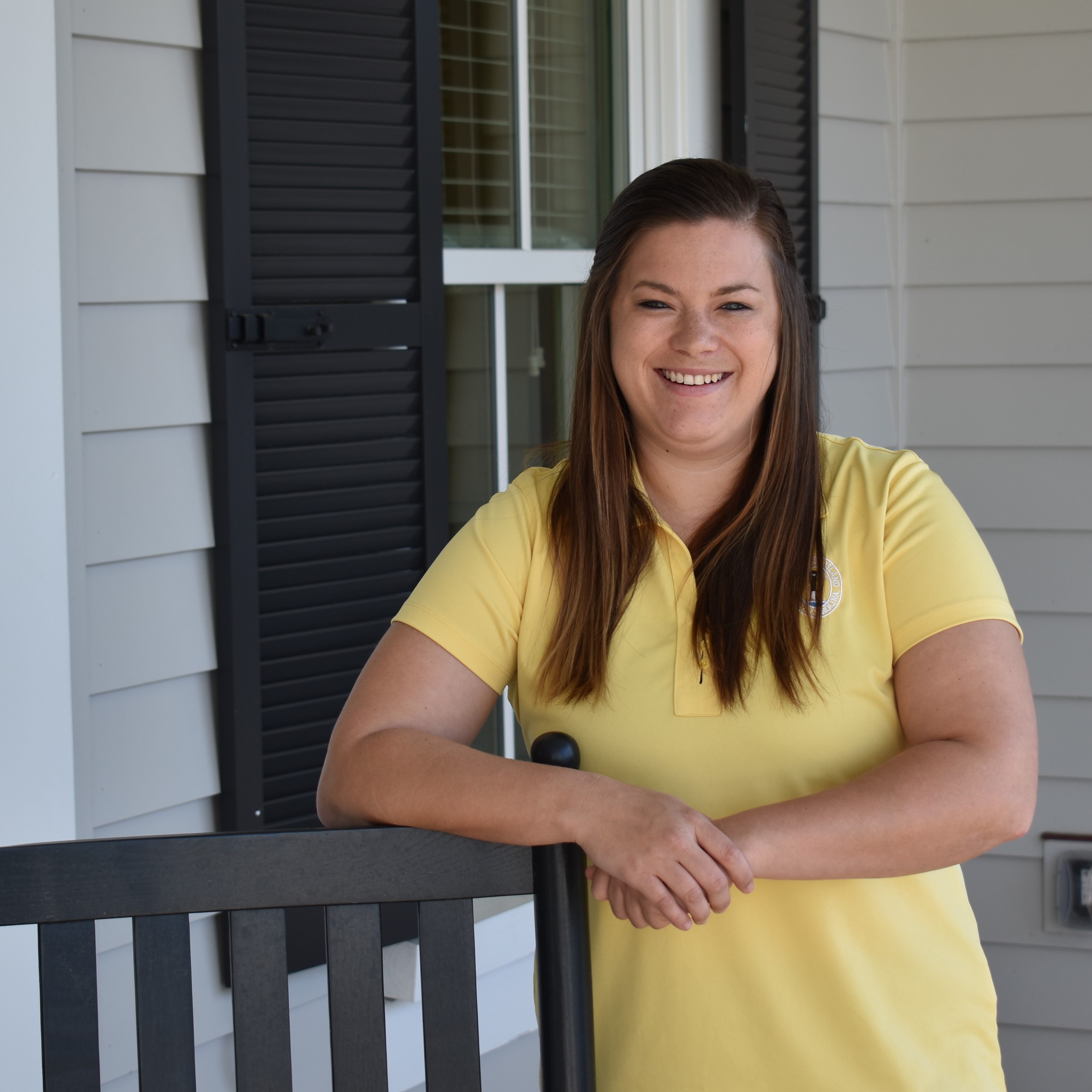
Jessi Gress
Business License & Permit Technician
8 Years on 02/21/2025
Jessi started working for the Town as a receptionist in February of 2017. She took the position of Business Licensing and Permit Technician in February of 2018. Her job duties include processing and issuing building permits, business licenses and general administrative customer service.
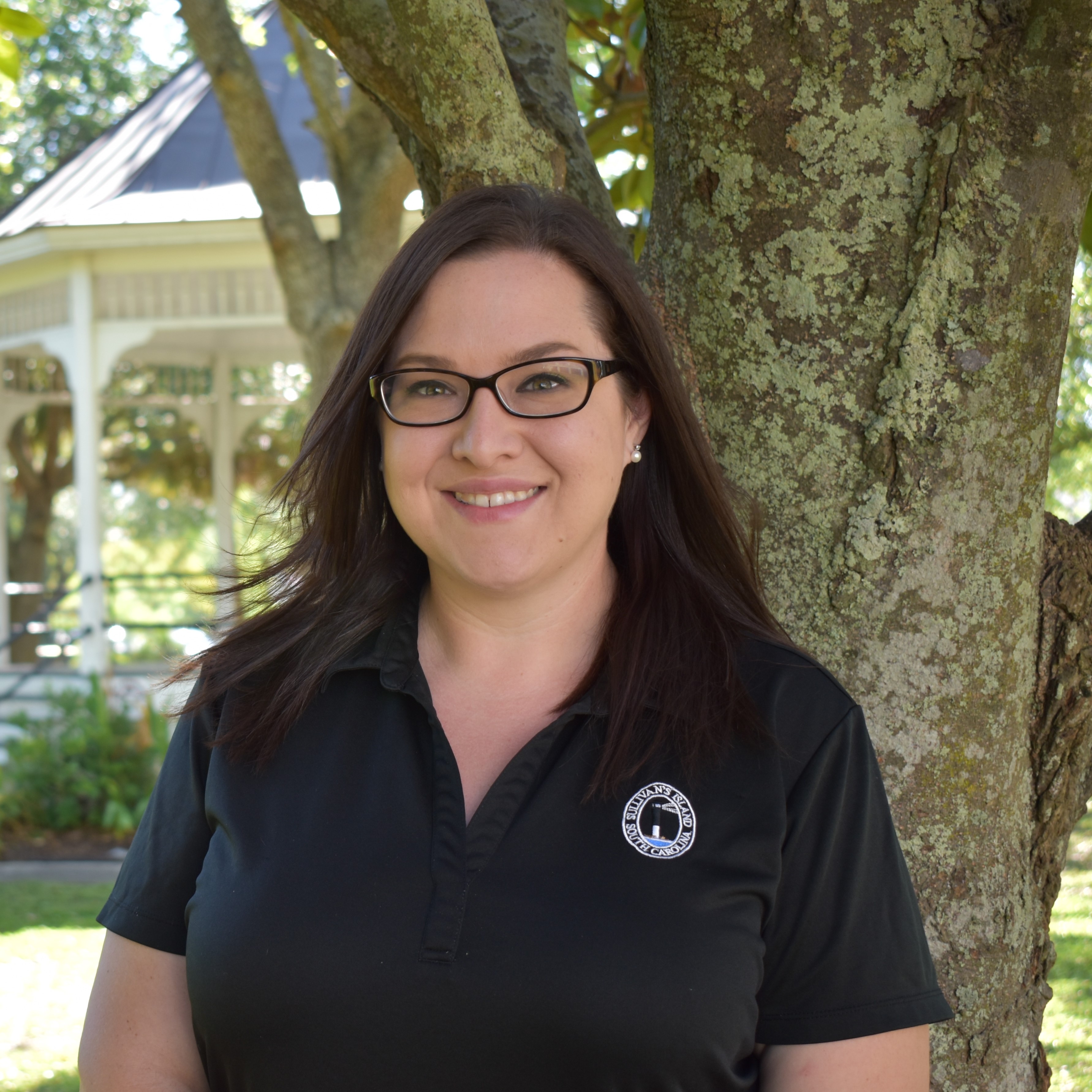
Mary Poole
Administrative Specialist
18 Years on 02/06/2025
Mary was hired in February of 2007. Her family dates back to 1896 on the Island. Her responsibilities include resident services, water and sewer billing and general administrative support. Mary is also a member of the Sullivan’s Island Volunteer Fire & Rescue Squad.
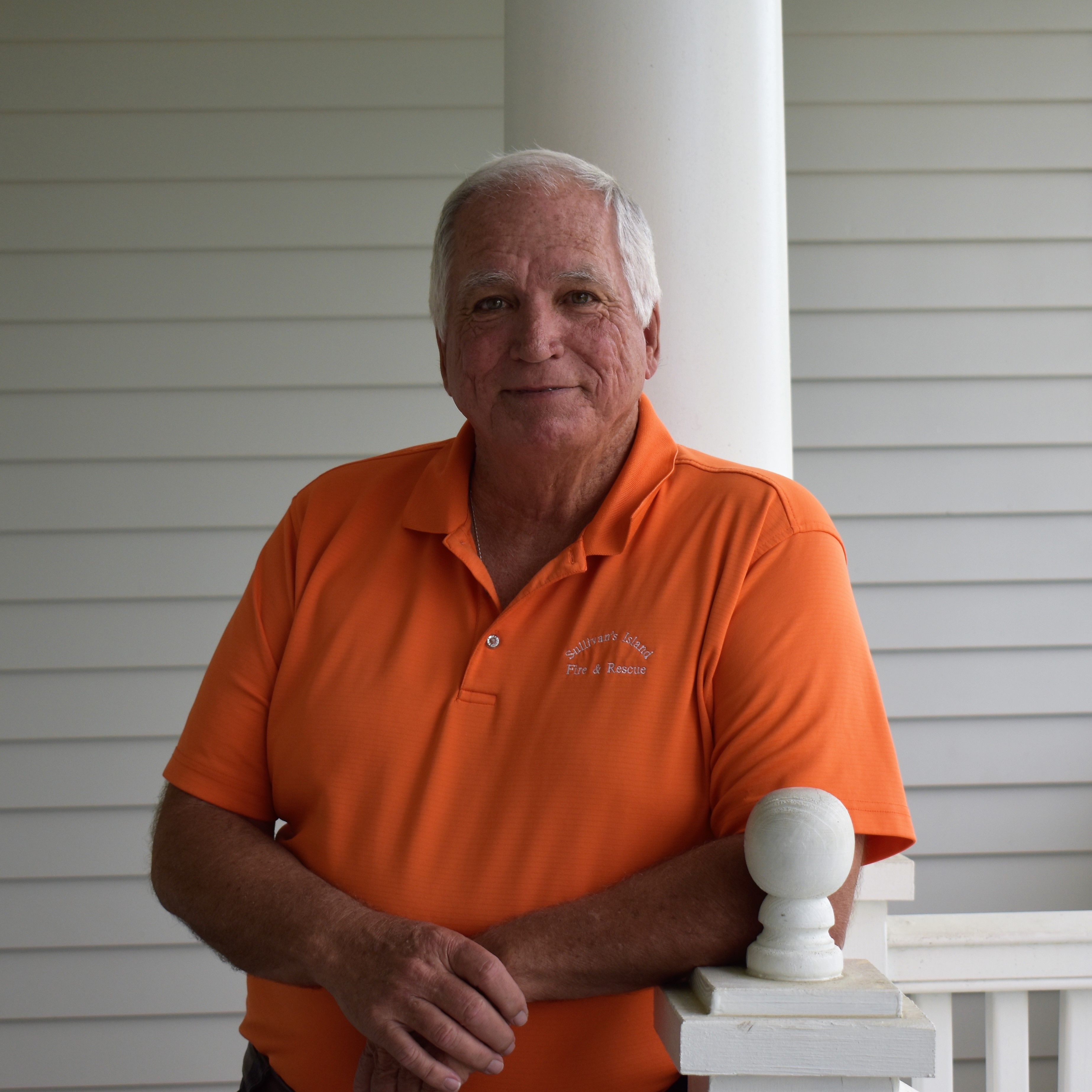
Anthony Stith
Fire Chief
43 years on 02/01/2025
Anthony Stith came on board as the Fire Chief in 1982. He got his start in the Fire & Rescue industry in 1974 working for the Mount Pleasant Fire Department. In addition to his regular duties as Chief, Anthony also leads Sullivan's Island Volunteer Fire & Rescue Squad and serves as the head of the Maintenance Department.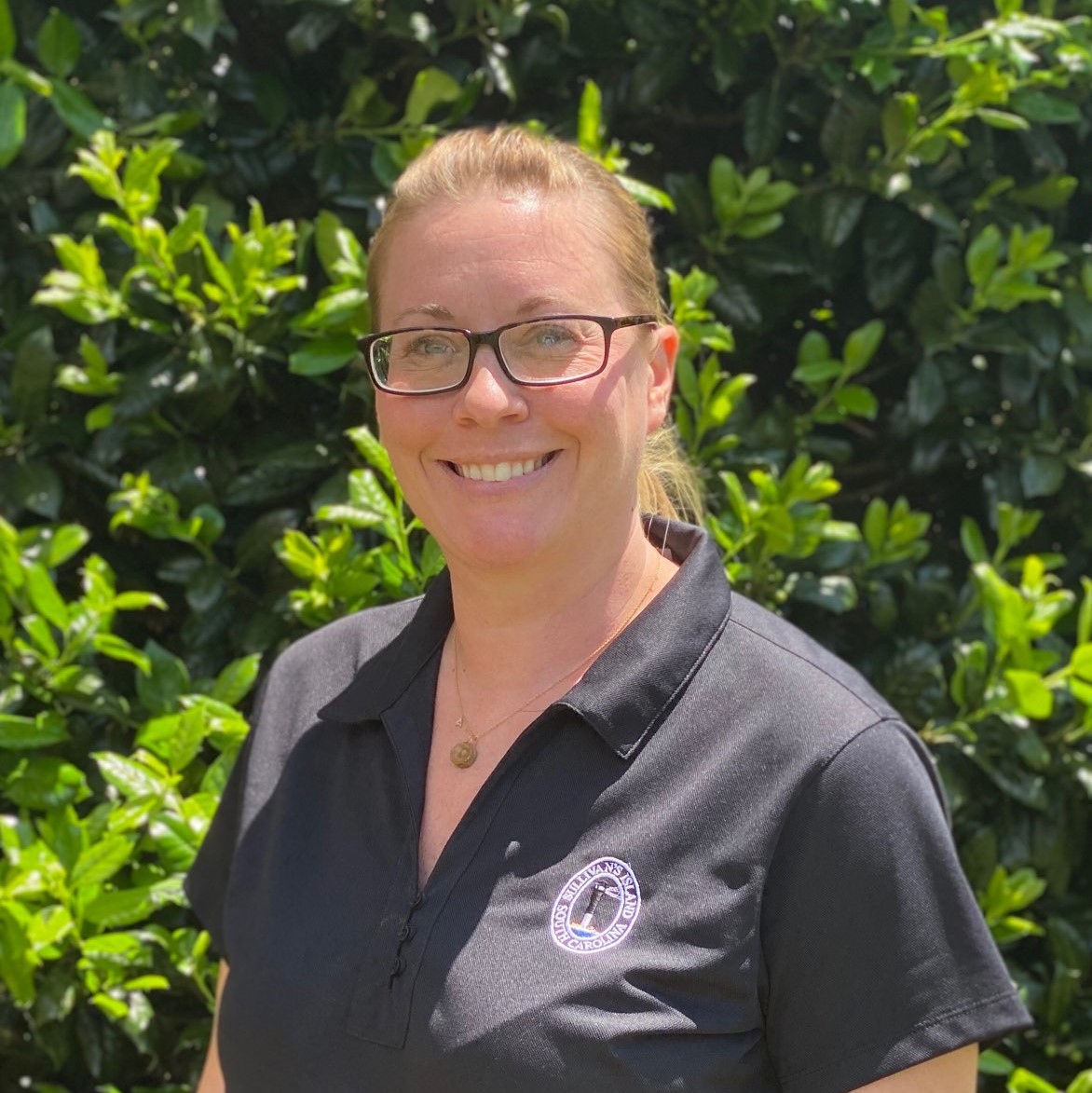
Becky Williams
Municipal Clerk
5 Years on 02/10/2025
Becky was hired as the Clerk of Court in 2020. She is responsible for Court correspondence, scheduling and payments. She helps guide the court process and assist when necessary and possible.

Board of Zoning Appeals Meeting
Thursday February 13 at 4:00- 5:00 pm
Town Hall Closed
Monday February 17
Council Meeting
Tuesday, February 18 at 6:00–7:00 pm
Historic Design Guidelines
Thomason and Associates Open House
Tuesday, February 18 CANCELED
Tentatively Rescheduled
April 15 at 5:00-6:00 pm
Design Review Board Meeting
Wednesday, February 19 at 4:00-5:00 pm
Tree Commission Meeting
Monday, February 24 at 4:00-5:00 pm
Final Presentation of the Stormwater Master Plan
Seamon, Whiteside and Associates
Council Meeting
Tuesday, March 18, 2025 at 6:00 pm
